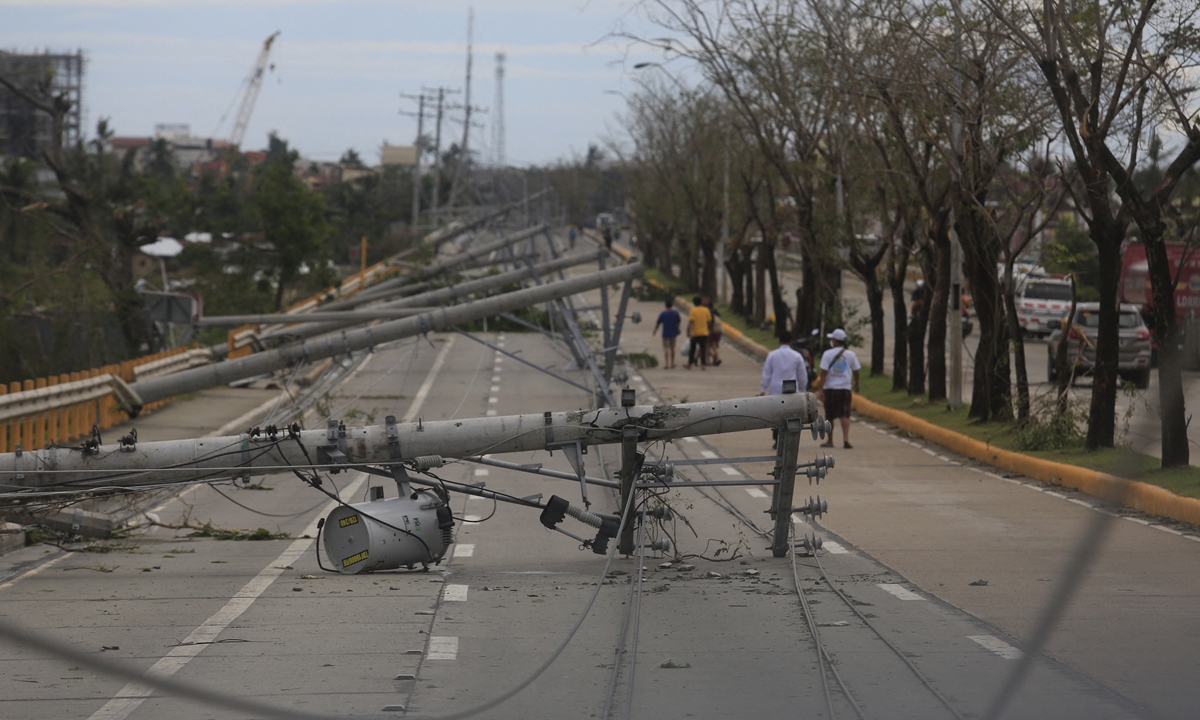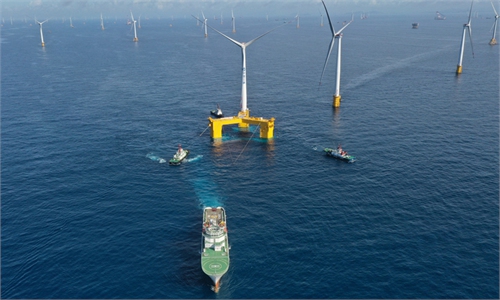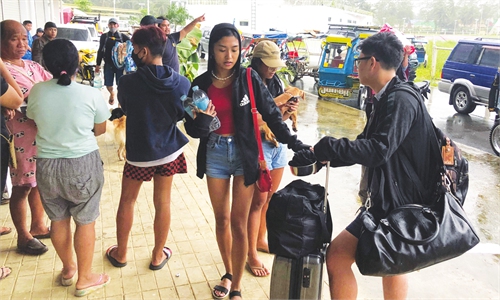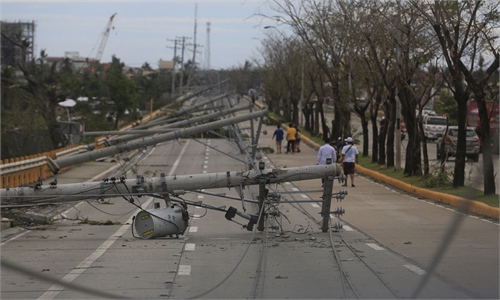Death toll passes 200 in Philippines
Food and water in short supply in aftermath of devastating Typhoon Rai

Residents walk past downed electric pylons in Talisay town, Cebu province on December 17, a day after Super Typhoon Rai pummelled the southern and central regions of the Philippines. Photo: AFP
The death toll from the strongest typhoon to hit the Philippines in 2021 surpassed 200 on Monday, as desperate survivors pleaded for urgent supplies of drinking water and food.The Philippine Red Cross reported "complete carnage" in coastal areas after Typhoon Rai left homes, hospitals and schools "ripped to shreds."
The storm tore off roofs, uprooted trees, toppled concrete power poles, smashed wooden houses to pieces, wiped out crops and flooded villages - sparking comparisons with Super Typhoon Haiyan in 2013.
At least 208 people were killed and 52 were missing in the latest disaster to hit the archipelago, with hundreds more injured after the storm ravaged southern and central regions, the national police said.
More than 300,000 people fled their homes and beachfront resorts as Rai slammed into the country on Thursday as a super typhoon.
"Our situation is so desperate," said Ferry Asuncion, a street vendor in the hard-hit seaside city of Surigao, which was devastated by the storm.
Residents urgently needed "drinking water and food."
One of the hardest-hit islands was Bohol - known for its beaches, rolling "Chocolate Hills," and tiny tarsier primates - where at least 80 people have died, provincial Governor Arthur Yap said on his official Facebook page.
Many wooden houses in the coastal town of Ubay were flattened and small fishing boats destroyed on the island, where a state of calamity has been declared.
There has also been widespread destruction on Siargao, Dinagat and Mindanao islands, which bore the brunt of the storm when it slammed into the country packing wind speeds of 195 kilometers per hour.
At least 10 people died on the Dinagat Islands, provincial information officer Jeffrey Crisostomo told AFP on Sunday.
SOS was painted on a road in the popular tourist town of General Luna on Siargao island, where surfers and holidaymakers had flocked ahead of Christmas, as people struggled to find water and food.
"There's no water anymore, there's a water shortage, on day one there was already looting in our neighborhood," Siargao resort owner Marja O'Donnell told CNN Philippines.
The storm has dealt a savage blow to the country's tourism sector, which was already struggling to recover after COVID-19 restrictions decimated visitor numbers.
Swathes of the affected areas have no communications, hampering efforts by disaster agencies to assess the full extent of the storm's damage.
Electricity also has been knocked out, affecting water-refilling stations and ATMs.
Some victims expressed frustration at the government's response to the disaster.
AFP



